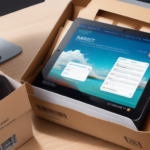Importance of Backing Up UPS WorldShip Data
As a business owner utilizing UPS WorldShip to manage shipping operations, safeguarding your data is paramount. Losing critical data such as shipping addresses, customer information, and shipping histories can disrupt your processes, leading to financial losses and operational inefficiencies. Regularly backing up your UPS WorldShip data ensures that you can swiftly restore your information in the event of unexpected system failures or data loss incidents.
Backing up data also serves as a defense against cyber threats. With cyberattacks on the rise, having a secure backup can prevent data loss or theft. In scenarios like ransomware attacks, where your data might be encrypted and held hostage, a backup allows you to recover without succumbing to ransom demands.
Moreover, archived data is invaluable for data analysis and reporting. Access to historical shipping data enables businesses to identify trends, optimize shipping strategies, and make informed decisions that enhance overall operational efficiency.
Common Causes of UPS WorldShip Data Loss
System Failures and Crashes
Unexpected system crashes or hardware malfunctions can lead to significant data loss. Ensuring that your hardware is reliable and up-to-date can mitigate some of these risks.
Human Error
Accidental deletion, overwriting of data, or improper system shutdowns are common human-induced causes of data loss. Implementing strict data management protocols and providing comprehensive training to employees can reduce these risks.
Cyber Threats
Viruses, malware, and ransomware attacks pose substantial threats to data integrity. According to a Statista report, ransomware attacks have surged globally, emphasizing the need for robust cybersecurity measures.
Power Outages and Surges
Electrical disruptions can corrupt data or damage hardware, leading to data loss. Utilizing surge protectors and uninterruptible power supplies (UPS) can help safeguard against these issues.
Recovering Lost UPS WorldShip Data Without a Backup
While having a backup is the most reliable method for data recovery, there are alternative approaches if you find yourself without one.
Data Recovery Software
Specialized data recovery tools like EaseUS Data Recovery Wizard, Recuva, and Stellar Data Recovery can scan your hard drive to locate and recover lost or deleted files. These tools are user-friendly and can be effective in restoring critical data.
Professional Data Recovery Services
If software solutions fail, professional data recovery services may offer a more comprehensive recovery option. These services employ advanced techniques and equipment to retrieve data from severely damaged systems. However, they can be costly, so it's essential to evaluate the value of the lost data against the expense of recovery services.
For more detailed information on data recovery methods, refer to resources like the National Institute of Standards and Technology (NIST).
Alternatives to Direct Data Migration
If you lack a backup, consider the following alternatives to move your UPS WorldShip data:
- Manual Data Export and Import: Utilize the "Export" function in WorldShip to export data from the old system and import it into the new one. This method requires technical expertise and can be time-consuming.
- Third-Party Migration Tools: There are migration tools designed specifically for transferring UPS WorldShip data. Ensure you select reputable tools with positive reviews to minimize risks such as data corruption.
- Manual Data Entry: As a last resort, manually re-entering data into the new system ensures accuracy but is labor-intensive and prone to human error.
Before proceeding with any of these methods, it's advisable to conduct a small-scale test migration to identify and address potential issues.
Preparing to Move UPS WorldShip Data Without a Backup
Proper preparation is crucial to minimize risks when moving UPS WorldShip data without a backup:
- Verify System Compatibility: Ensure that both the source and destination systems are compatible and have the same version of UPS WorldShip installed.
- Disable Security Software Temporarily: Temporarily disabling antivirus or firewall software can prevent interference during the data transfer process.
- Ensure Sufficient Storage: Confirm that the destination system has adequate storage space to accommodate the transferred data.
- Schedule Appropriately: Plan the migration during off-peak hours to avoid disruptions to daily operations.
- Develop a Contingency Plan: Prepare for potential issues by outlining steps to take if the migration encounters problems.
Step-by-Step Guide to Moving Data Without a Backup
Follow these detailed steps to migrate your UPS WorldShip data without a backup:
- Export Data: On the old system, use the "Export" function in UPS WorldShip to export your data.
- Transfer Data File: Move the exported data file to the new system using a secure method such as a USB drive or encrypted cloud storage.
- Import Data: On the new system, use the "Import" function in UPS WorldShip to import the transferred data file.
- Verify Data Integrity: Check that all critical data, including customer information and shipping histories, have been accurately transferred.
- Re-enable Security Software: Turn antivirus and firewall protections back on to secure your system.
After completing these steps, perform a test shipment to ensure that UPS WorldShip is functioning correctly and that all data has been accurately migrated.
Troubleshooting and Best Practices
Troubleshooting Common Issues
If you encounter errors during the migration process, consider the following troubleshooting tips:
- Check Software Versions: Ensure both systems are running the latest version of UPS WorldShip to avoid compatibility issues.
- Review Error Logs: Analyze any error messages or logs generated during the migration to identify specific problems.
- Contact Technical Support: Reach out to UPS technical support for assistance with unresolved issues.
- Verify Data Integrity: Conduct data integrity checks before and after migration to ensure completeness and accuracy.
Best Practices for Data Migration
Adhering to best practices can facilitate a smooth data migration process:
- Regular Backups: Establish a routine backup schedule to prevent future data loss.
- System Verification: Confirm that both source and destination systems are in optimal condition before migration.
- Disable Interfering Software: Temporarily disable antivirus or firewall programs that might disrupt the data transfer.
- Contingency Planning: Have backup plans in place to address any unforeseen complications during migration.
- Employee Training: Educate staff on proper data handling and migration procedures to minimize human error.
Preventing Future UPS WorldShip Data Loss
To avert data loss in the future, implement the following preventive measures:
- Regularly Back Up Data: Schedule frequent backups to secure locations, such as external drives or cloud-based services.
- Maintain Updated Systems: Keep your operating system and UPS WorldShip software up to date with the latest patches and updates.
- Enhance Cybersecurity: Utilize robust antivirus and anti-malware solutions to protect against cyber threats.
- Test Backups: Periodically verify that your backups are functioning correctly and can be restored when needed.
- Develop a Disaster Recovery Plan: Outline clear steps for data restoration in the event of a loss, ensuring quick recovery with minimal downtime.
Additionally, fostering a culture of data awareness and providing comprehensive training to employees can significantly reduce the risk of data loss due to human error.
Conclusion
Successfully moving your UPS WorldShip data without a backup is challenging but achievable with careful planning and execution. By following the outlined steps and adhering to best practices, you can minimize the risks associated with data migration. However, the most effective strategy remains regular data backups and proactive data management to ensure the integrity and availability of your critical shipping information.
For further assistance or professional support, consider consulting with IT experts who specialize in data migration and UPS WorldShip integrations.






















